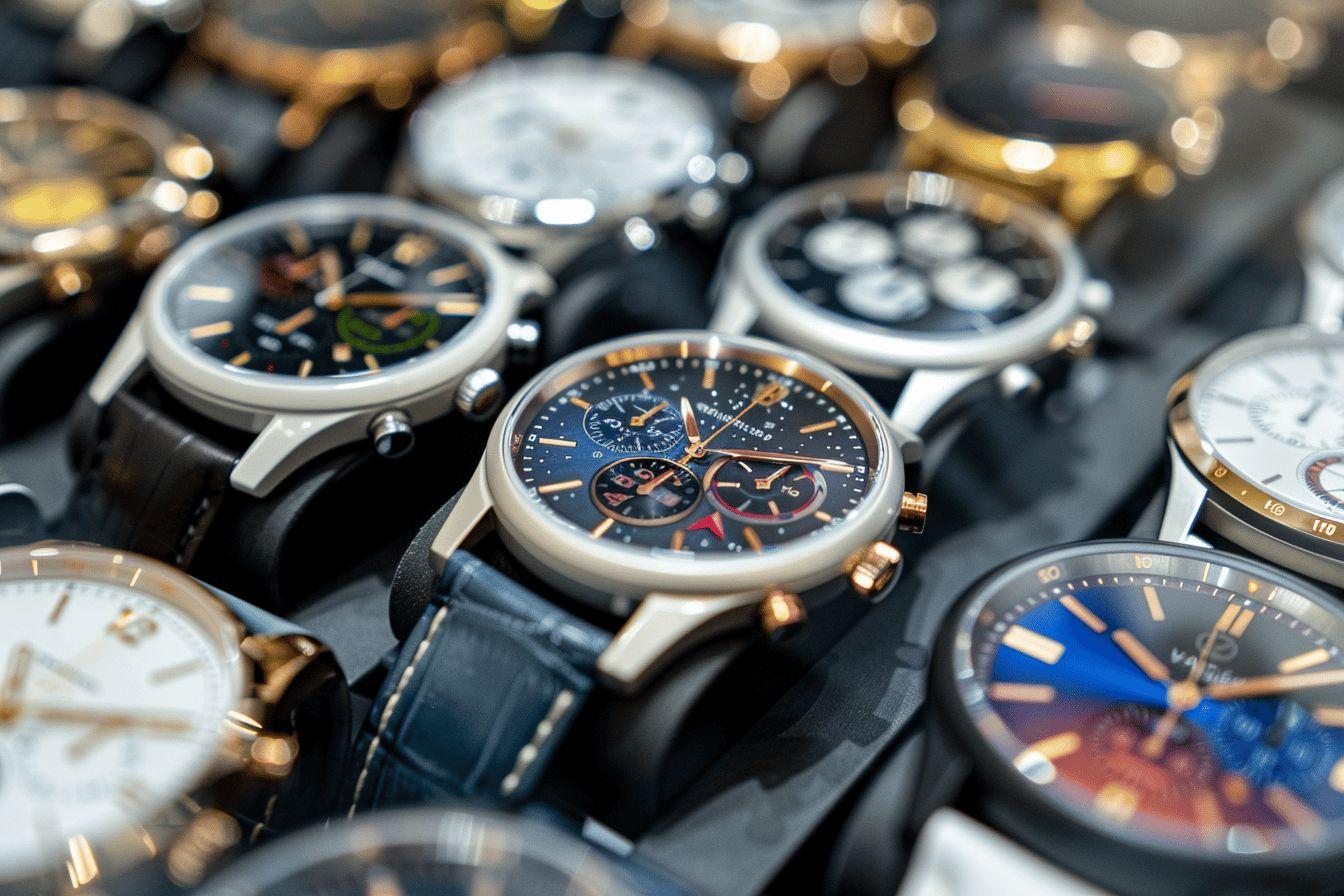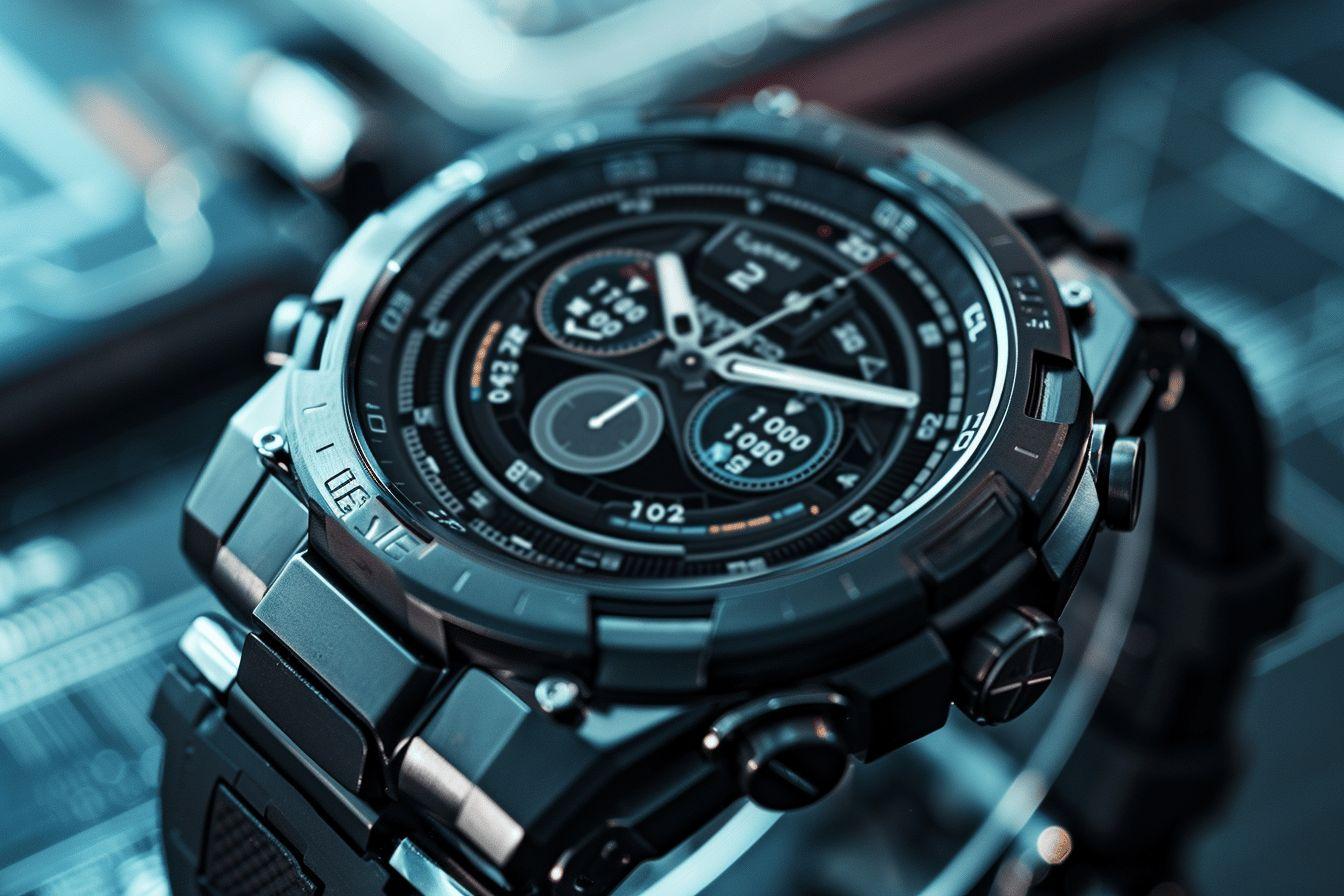Connected watches, or smartwatches, have revolutionized the way we interact with technology on a daily basis. These wrist-worn devices offer a multitude of functionalities, from tracking physical activity to receiving notifications and running specialized applications. Let’s delve into the alluring world of these technological jewels and analyze their strengths, challenges and solutions for getting the most out of them.
Advanced smartwatch functionalities and connectivity
Smartwatches stand out for their versatility and connectivity. Equipped with a touchscreen generally between 1.3 and 2.01 inches, they enable intuitive interaction with their many functions. Among the most popular features are :
- Heart rate monitor
- Integrated GPS
- Barometer
- Physical activity tracking
- Receive notifications
Bluetooth connectivity is at the heart of the user experience, enabling seamless synchronization with smartphones. This wireless link facilitates data exchange and access to your phone’s extensive functions, right from your wrist.
Smartwatches also excel in the health sector. They are capable of detecting heart problems such as atrial fibrillation, effectively offering a valuable tool for preventive health monitoring. Some models go even further, integrating functions for early diagnosis of heart rhythm disorders and sleep apnea.
Personalization and accessories for your connected watch
Smartwatches are not just about aesthetics. Personalization is at the heart of the user experience, with a variety of options for adapting your watch to your personal style. Interchangeable straps play a crucial role in this customization:
| Band type | Features | Recommended use |
|---|---|---|
| Silicone | Resistant, easy to clean | Sports, everyday wear |
| Leather | Elegant, comfortable | Formal occasions, office |
| Metal | Durable, sophisticated | Parties, special events |
Beyond bracelets, smartwatch accessories enrich the user experience. From specially designed USB cables to wireless charging stations and screen protectors, each accessory contributes to optimizing the use and longevity of your smartwatch.
Customization also extends to the watch face, with thousands of designs available on dedicated platforms. Whether you prefer a classic or futuristic look, there’s a dial for every taste and occasion.

Autonomy and innovative recharging solutions
Autonomy remains a major issue for smartwatch users. Battery life varies considerably from model to model, ranging from a few days to almost three weeks for the most powerful. This disparity is due to differences in battery capacity and software optimization between manufacturers.
To overcome these limitations, manufacturers have developed innovative recharging solutions. The most common options include :
- Classic USB cable charging
- Wireless charging stations
- Compatible portable chargers
- Solar charging (on specific models)
Speed of charge is also an important criterion. Some smartwatches can recover several hours of autonomy in just a few minutes of charging, a feature particularly appreciated by active users.
To maximize your smartwatch’s battery life, we recommendoptimizing the display and notification settings. Reducing screen brightness, limiting non-essential notifications and disabling GPS functions when not required can significantly extend battery life.
Specialized applications and data security
The smartwatch application ecosystem is constantly expanding, with specialized applications to meet specific needs. For example, the 6W4U application developed by Thales for law enforcement agencies illustrates the potential of these devices in demanding professional contexts.
Synchronization with smartphones is facilitated by dedicated applications, available on iOS and Android. These interfaces enable fine-tuned management of watch parameters, analysis of collected data and installation of new applications.
Nevertheless, the proliferation of personal data collected by these devices raises questions of security and confidentiality. Manufacturers are integrating advanced protection features, such as :
- Encryption of stored and transmitted data
- Biometric authentication to unlock the device
- Remote deletion options in the event of loss or theft
It is crucial for users to remain vigilant when it comes to managing their personal information. Regular updating of watch firmware and the use of strong passwords are essential practices to guarantee data security.
Trends and future prospects for smartwatches
The smartwatch market is constantly evolving, with technological innovations pushing back the boundaries of what these devices can achieve. Current trends include the integration of ever more precise sensors for health monitoring, improved autonomy thanks to more powerful batteries and less energy-consuming displays.
Artificial intelligence is playing a growing role in the user experience of connected watches. Voice assistants are becoming more sophisticated, capable of understanding complex commands and performing advanced tasks without the need for smartphone intervention.
Smartwatch prices vary considerably, from €100 for entry-level models to over €400 for top-of-the-range versions. This diversity of supply means that this technology is available to a wide public, each with their own needs and budget.
In the future, we can expect to see even more autonomous connected watches, capable of operating independently of a smartphone. The integration of technologies such as 5G could pave the way for new applications, transforming these devices into veritable portable communication and productivity hubs.


